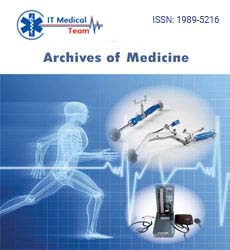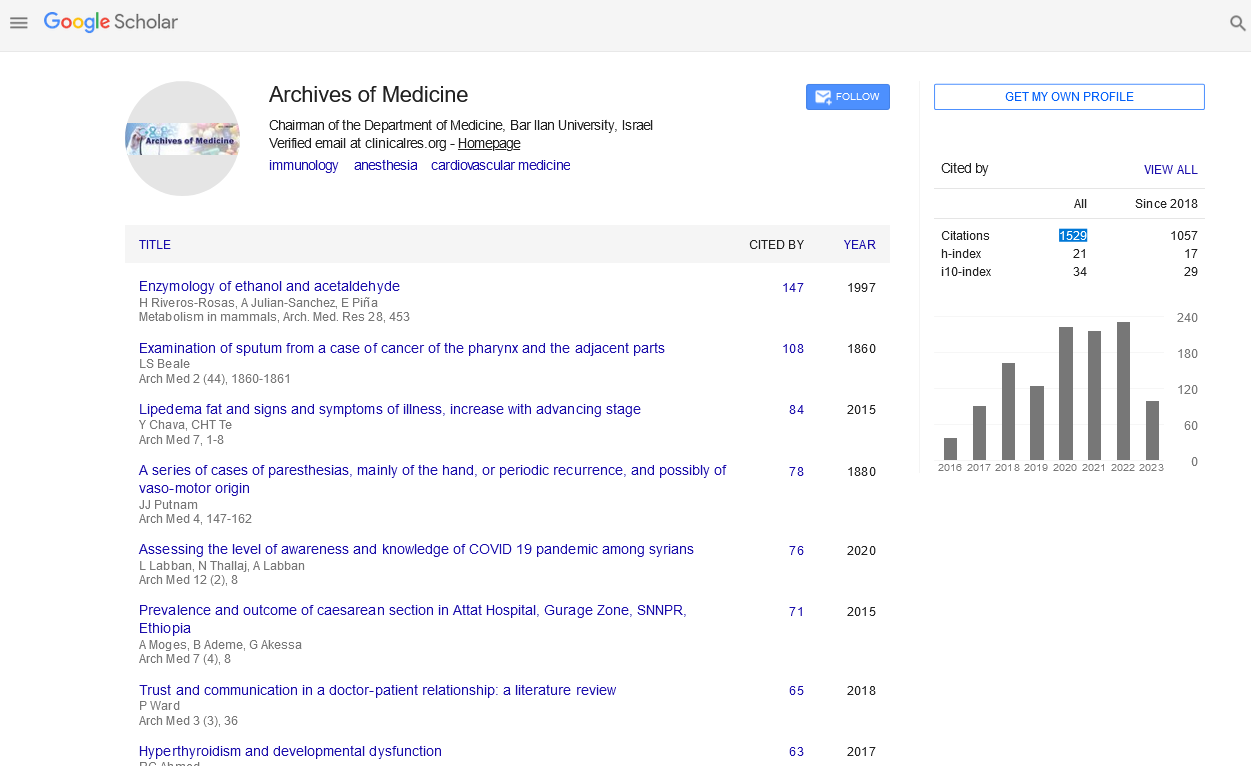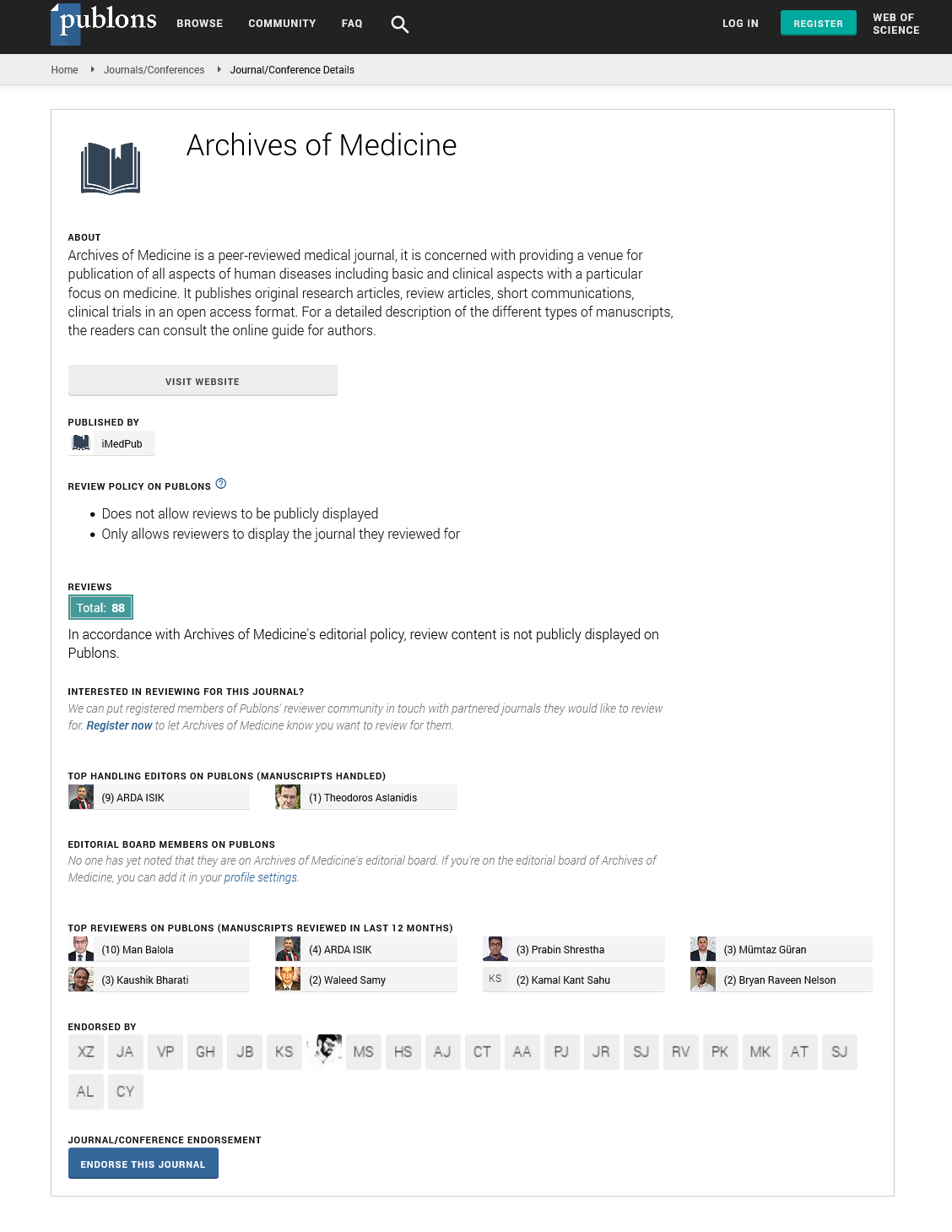Perspective - (2025) Volume 17, Issue 1
Pharmacogenomics in toxicology: Tailoring antidotes to genetic profiles
Lars Holmgren*
Department of Pharmacology and Toxicology, Karolinska Institute, Solna, Stockholm County, Sweden
*Correspondence:
Lars Holmgren, Department of Pharmacology and Toxicology, Karolinska Institute, Solna, Stockholm County,
Sweden,
Email:
Received: 03-Jan-2025, Manuscript No. ipaom-24-15477;
Editor assigned: 06-Jan-2025, Pre QC No. P-15477;
Reviewed: 17-Jan-2025, QC No. Q-15477;
Revised: 22-Jan-2025, Manuscript No. R-15477;
Published:
29-Jan-2025
Introduction
Pharmacogenomics, the study of how an individual's genetic makeup influences their response to drugs, has revolutionized the field of personalized medicine. In toxicology, where the consequences of drug interactions, overdoses, and poisonings can be life-threatening, the integration of pharmacogenomics has opened new avenues for improving patient outcomes. By tailoring antidotes and treatments to the genetic profiles of individuals, it becomes possible to enhance therapeutic efficacy and minimize adverse effects. This precision-based approach is particularly valuable in managing toxicological emergencies, where timely and effective intervention is critical. The importance of pharmacogenomics in toxicology stems from the genetic variability that influences the metabolism, distribution, and elimination of toxic substances and their antidotes. Variations in genes encoding enzymes, transporters, and receptors can significantly affect an individual's ability to detoxify harmful compounds or respond to treatment. Understanding these genetic factors allows toxicologists and clinicians to predict patient-specific risks, optimize dosing strategies, and develop more targeted therapies. This article explores the role of pharmacogenomics in toxicology, emphasizing how genetic insights are being used to refine antidote development and application for improved patient care [1].
Description
The relationship between pharmacogenomics and toxicology is deeply rooted in the interplay between genetics and drug metabolism. Many toxicological events arise from variations in how individuals process xenobiotics, chemical substances foreign to the body. Enzymes involved in drug metabolism, such as those encoded by the cytochrome P450 (CYP) family, exhibit genetic polymorphisms that can lead to variability in drug clearance rates. For example, individuals with certain CYP2D6 polymorphisms may metabolize drugs like codeine or tamoxifen either too quickly or too slowly, resulting in suboptimal therapeutic effects or increased toxicity. Identifying these genetic variations allows for a more tailored approach to managing toxic exposures and overdoses, as clinicians can adjust antidote dosages or select alternative treatments based on a patientâ??s genetic profile. Pharmacogenomics also plays a pivotal role in managing toxicity from drugs that have narrow therapeutic indices. Warfarin, a commonly used anticoagulant, is a prime example of a drug whose efficacy and safety are heavily influenced by genetic factors. Variants in the VKORC1 gene, which encodes the target enzyme of warfarin, and CYP2C9, which metabolizes the drug, significantly affect an individualâ??s sensitivity to warfarin. In cases of overdose or bleeding complications, these genetic insights guide the administration of antidotes such as vitamin K or prothrombin complex concentrates, ensuring the rapid reversal of anticoagulation while minimizing the risk of further complications. This approach highlights the potential of pharmacogenomics to improve the precision and effectiveness of toxicological interventions [2].
Another area where pharmacogenomics is making significant strides is in the management of poisoning caused by environmental toxins, industrial chemicals, or illicit substances. Genetic variations in enzymes like Glutathione S-Transferases (GSTs) and N-acetyltransferases (NATs) can influence an individual's ability to detoxify harmful compounds. For instance, people with reduced activity of GST enzymes may be more susceptible to oxidative stress and tissue damage caused by exposure to toxicants like heavy metals or pesticides. Pharmacogenomic testing can identify at-risk individuals and guide the use of detoxifying agents, such as chelating agents or antioxidants, tailored to their genetic makeup. Beyond improving the administration of existing antidotes, pharmacogenomics is driving innovation in the development of new therapies for toxicological emergencies. By identifying genetic targets associated with toxic responses, researchers are designing antidotes that specifically address the underlying mechanisms of toxicity. For example, targeted therapies are being developed to counteract the effects of organophosphate poisoning, a serious threat in agricultural and chemical warfare contexts. Genetic studies have revealed polymorphisms in paraoxonase (PON1), an enzyme that hydrolyzes organophosphates, which influence an individual's susceptibility to poisoning. These insights are being used to create enzyme-based antidotes that are customized to enhance the detoxification capacity of patients with low PON1 activity [3].
Pharmacogenomics is also being applied to the treatment of adverse drug reactions (ADRs), a significant concern in clinical toxicology. ADRs can range from mild side effects to severe, life-threatening conditions such as Stevens-Johnson syndrome or toxic epidermal necrolysis. Genetic markers, such as HLA-B15:02 and HLA-A31:01, have been associated with hypersensitivity reactions to drugs like carbamazepine and abacavir. Identifying these markers through pharmacogenomic testing allows clinicians to avoid prescribing high-risk medications to susceptible individuals and to select safer alternatives. This proactive approach not only reduces the incidence of ADRs but also enhances patient safety and confidence in treatment. Despite its promising potential, the integration of pharmacogenomics into toxicology faces several challenges. One major hurdle is the complexity of genetic influences on drug response, which often involves the interplay of multiple genes and environmental factors. Additionally, access to pharmacogenomic testing and the interpretation of results require specialized resources and expertise, which may not be readily available in all clinical settings. Ethical considerations, such as patient privacy and the equitable distribution of pharmacogenomic benefits, must also be addressed to ensure that advances in this field are accessible to diverse populations [4].
The future of pharmacogenomics in toxicology is bright, as technological advancements and growing research continue to expand our understanding of genetic influences on toxicity and treatment. The advent of next-generation sequencing and other high-throughput genomic technologies has made it possible to identify novel genetic markers and pathways involved in toxic responses. These discoveries are paving the way for the development of more effective and personalized antidotes, as well as predictive tools for assessing individual susceptibility to toxicants. Furthermore, the integration of pharmacogenomics with other emerging fields, such as metabolomics and systems biology, holds the potential to provide a more comprehensive understanding of the factors that influence drug toxicity and response [5].
Conclusion
Pharmacogenomics represents a transformative approach to toxicology, offering the potential to tailor antidotes and treatments to the genetic profiles of individuals. By leveraging insights into genetic variability, toxicologists can optimize the management of drug overdoses, poisonings, and adverse drug reactions, improving patient outcomes and reducing the risks associated with toxicological emergencies. The application of pharmacogenomics extends beyond enhancing the efficacy of existing treatments; it also drives the development of innovative therapies and predictive tools that address the unique challenges of toxicology. While challenges remain in the widespread implementation of pharmacogenomic testing, ongoing research and technological advancements are paving the way for its integration into routine clinical practice. As we continue to unlock the genetic factors underlying toxicity and treatment response, pharmacogenomics promises to redefine the landscape of toxicology, bringing us closer to a future of truly personalized medicine.
Acknowledgment
None.
Conflict of Interest
None.
References
- Di Nunno N, Esposito M, Argo A, et al. Pharmacogenetics and forensic toxicology: A new step towards a multidisciplinary approach. Toxics. 2021 4;9(11):292.
Google Scholar Cross Ref Indexed at
- Agrawal YP, Rennert H. Pharmacogenomics and the future of toxicology testing. Clin Lab Med. 2012 1;32(3):509-523.
Google Scholar Cross Ref Indexed at
- Rudin S, Marable M, Huang RS. The promise of pharmacogenomics in reducing toxicity during acute lymphoblastic leukemia maintenance treatment. Genomics Proteomics Bioinformatics. 2017;15(2):82-93.
Google Scholar Cross Ref Indexed at
- Moen EL, Godley LA, Zhang W, et al. Pharmacogenomics of chemotherapeutic susceptibility and toxicity. Genome Med. 2012;4:1-9.
Google Scholar Cross Ref Indexed at
- Nakamura Y. Pharmacogenomics and drug toxicity. N Engl J Med. 2008 21;359(8):856-858.
Google Scholar Cross Ref Indexed at






